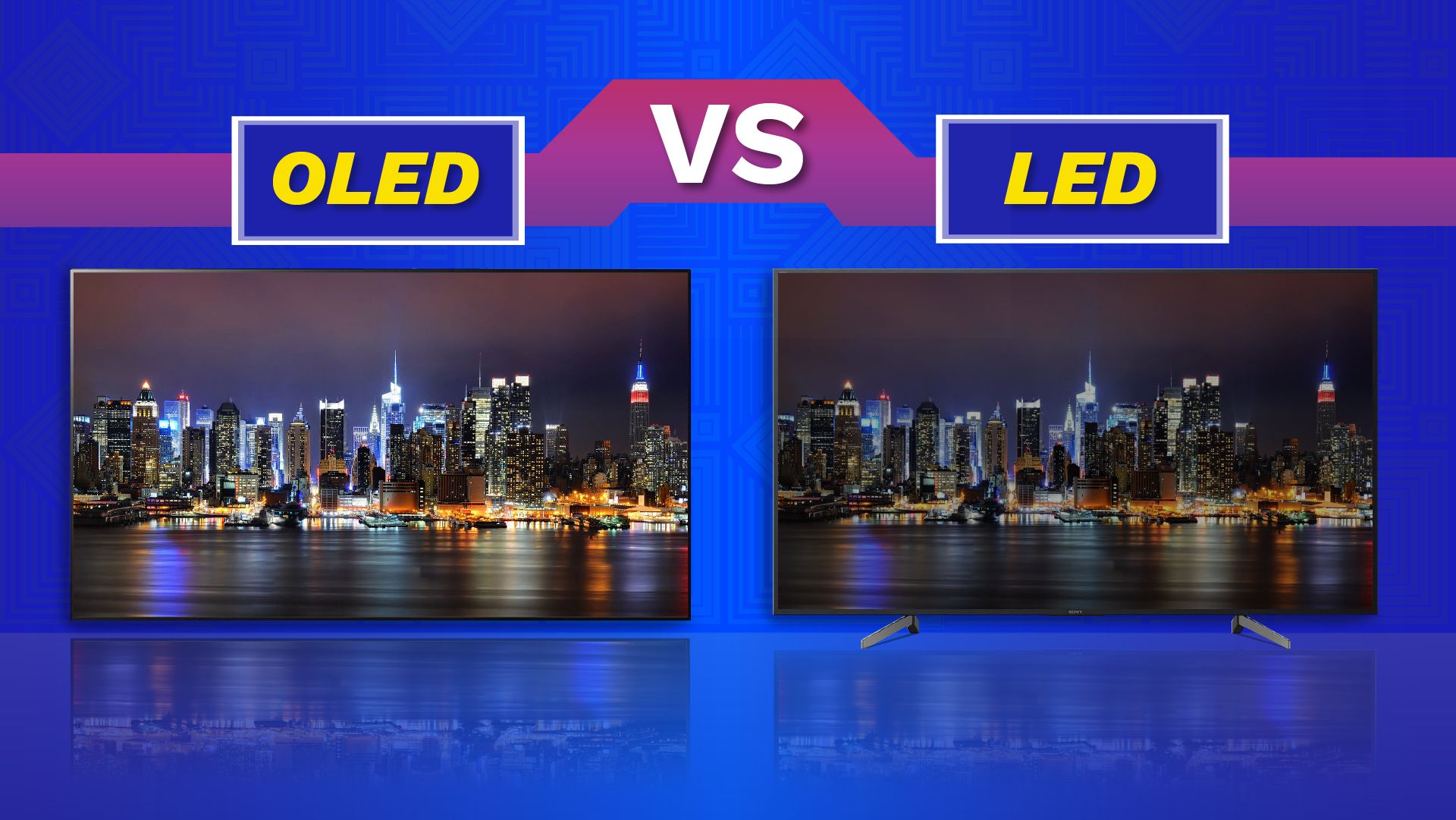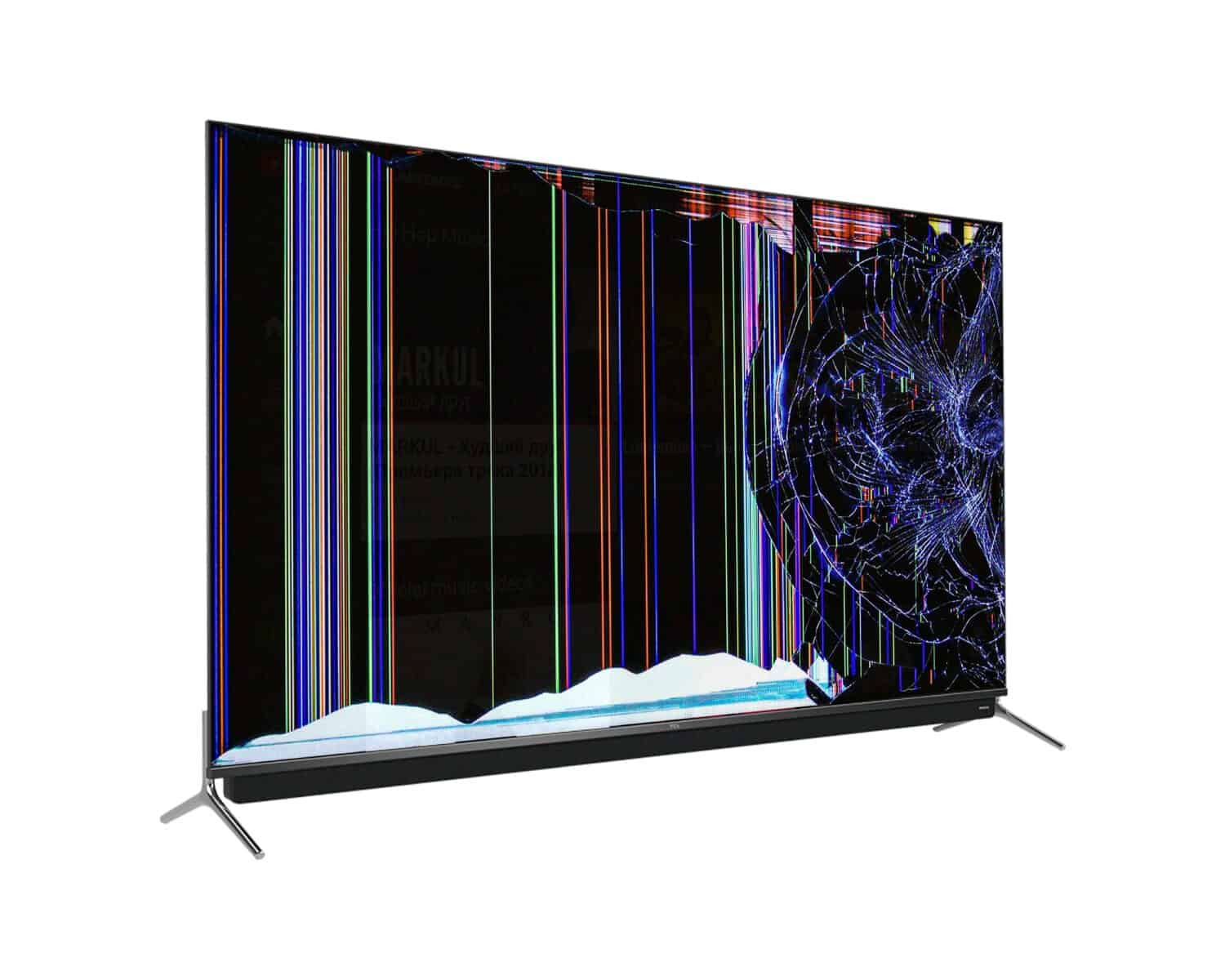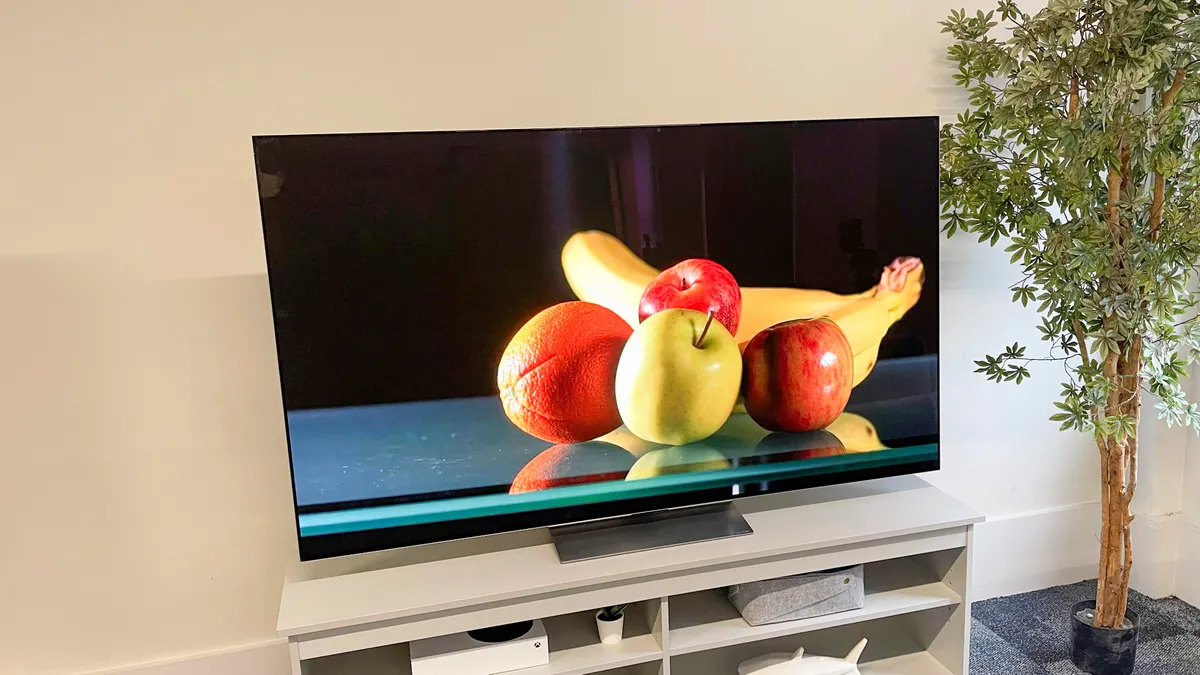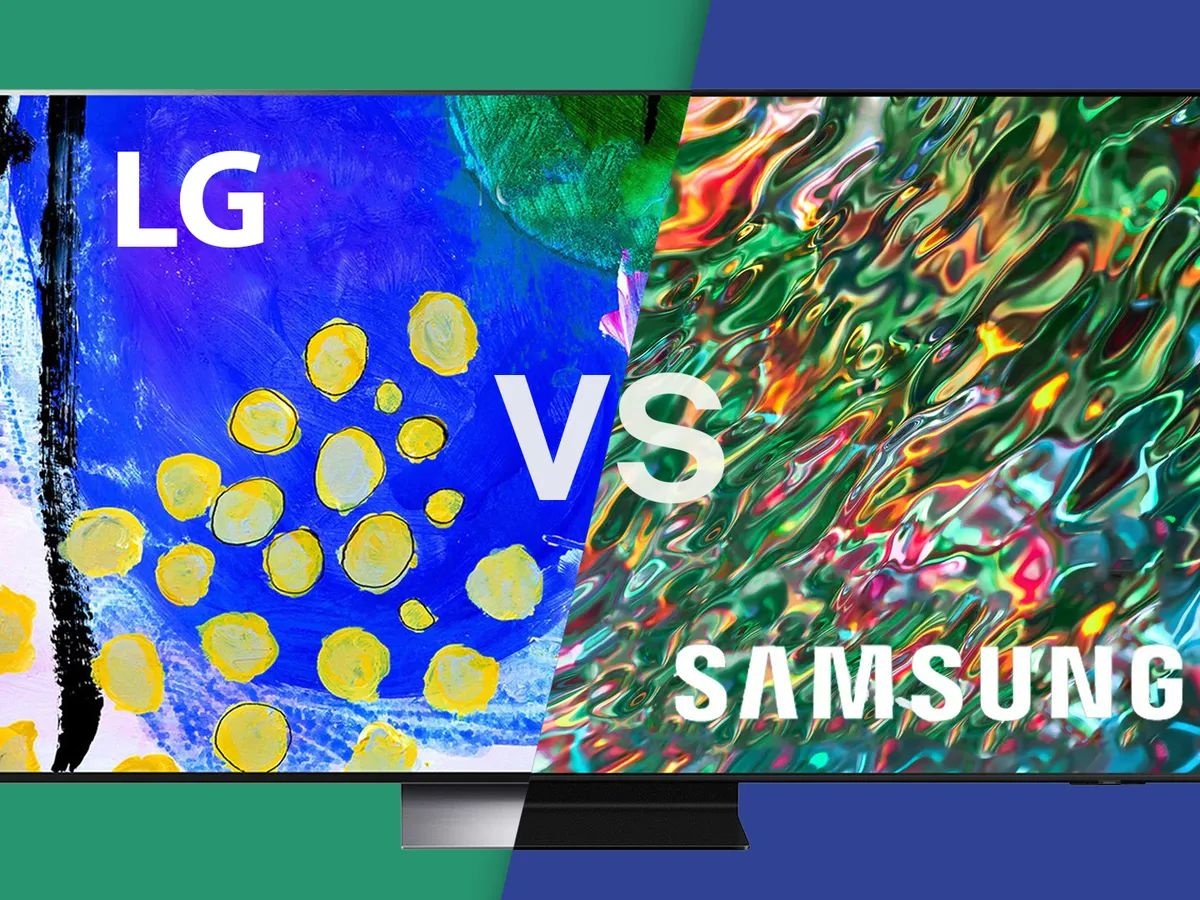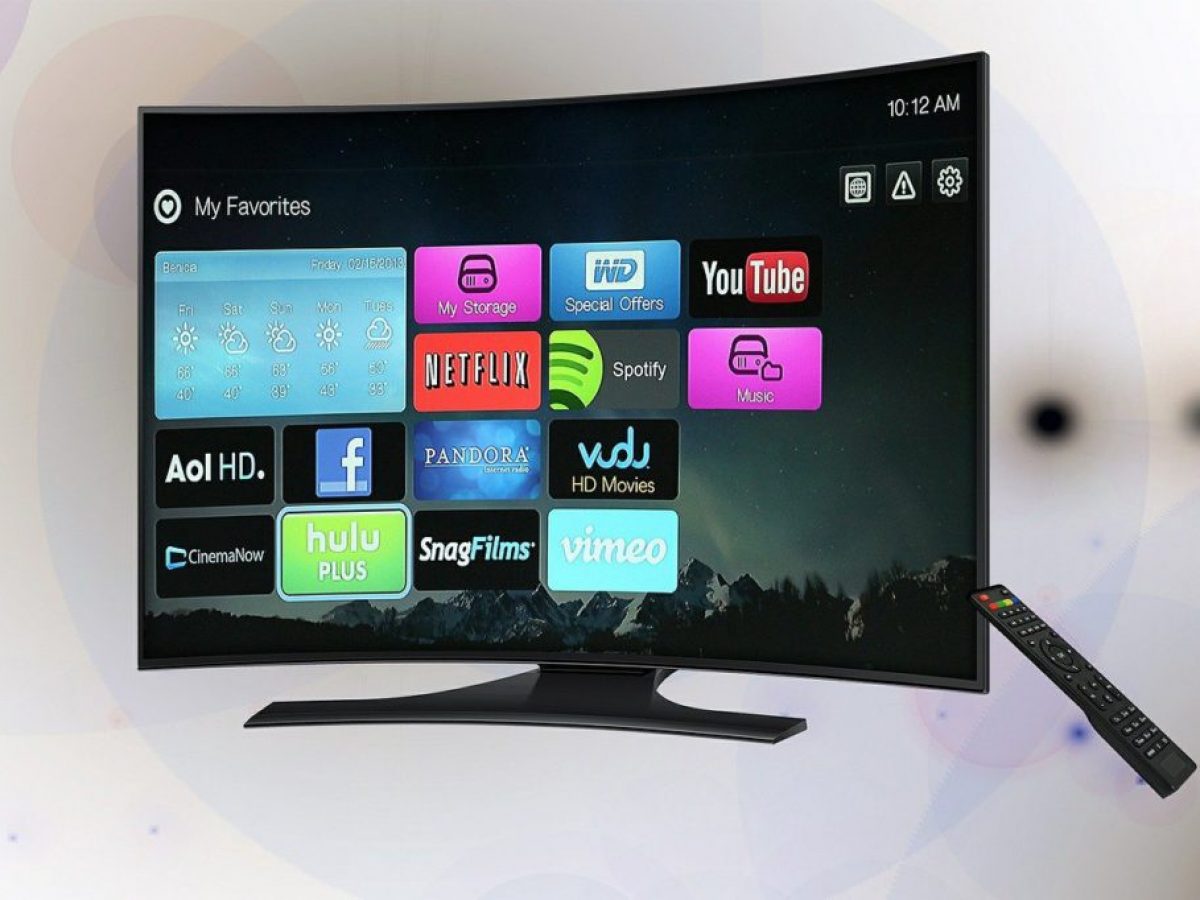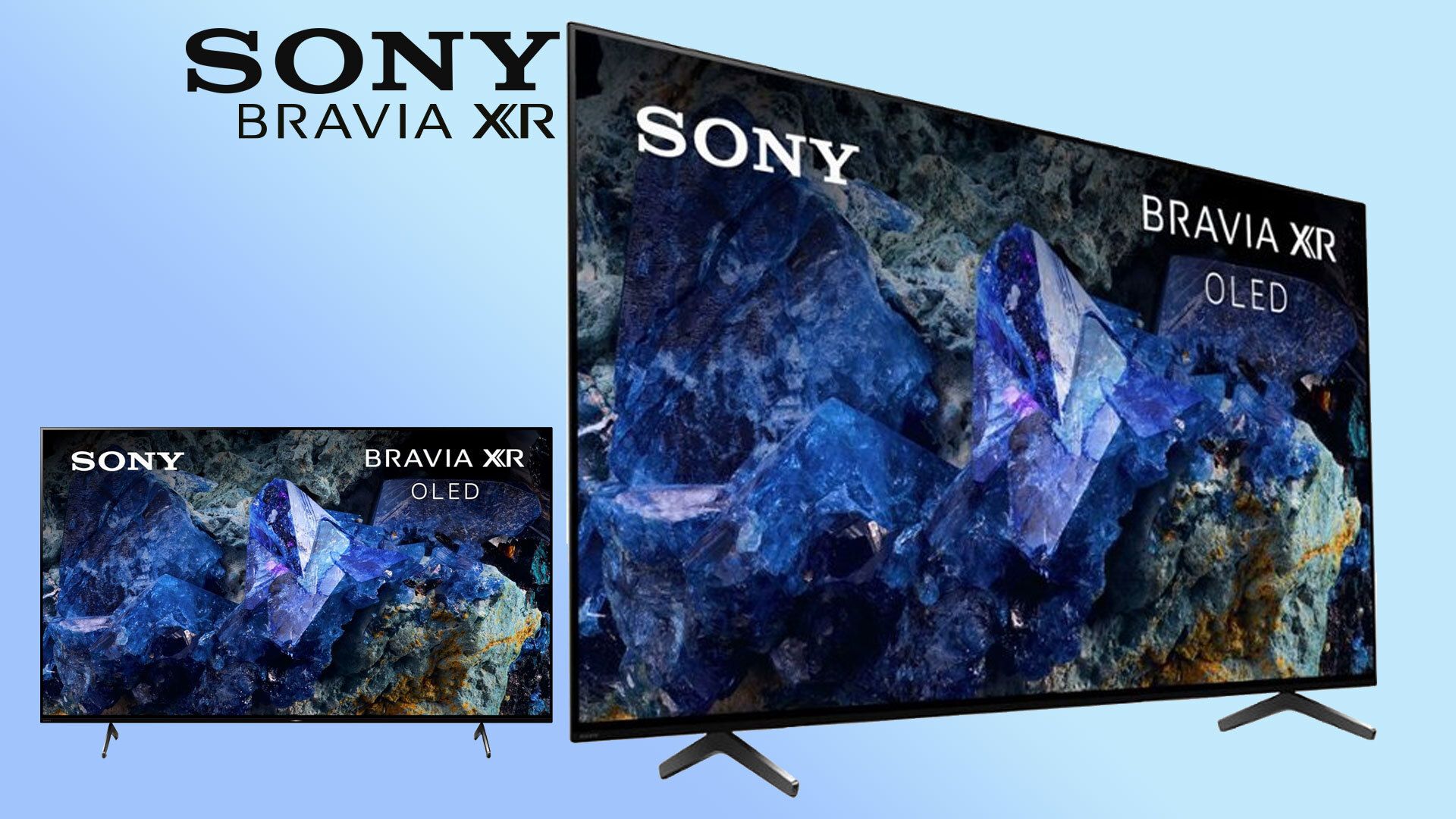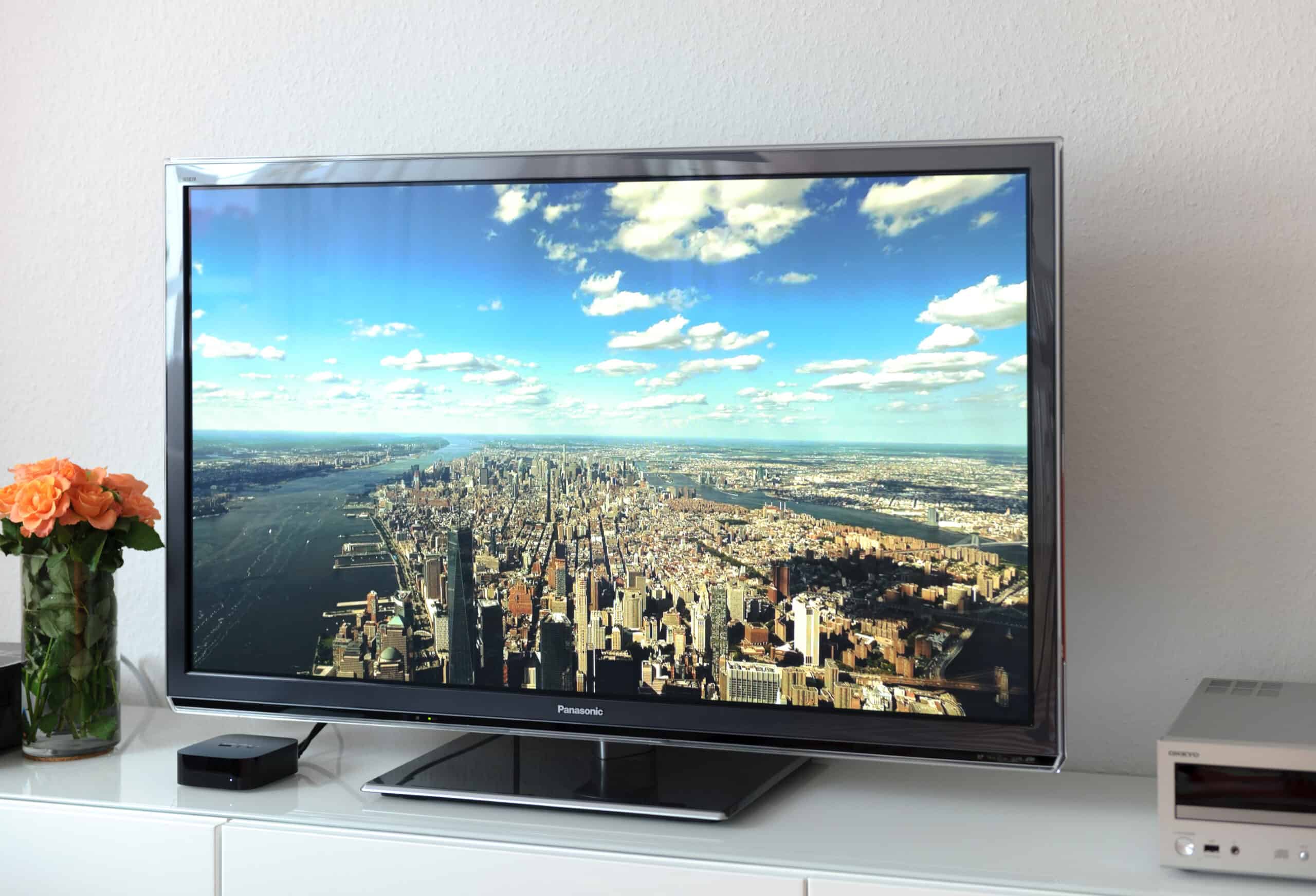Introduction
When it comes to choosing a new television, you may have noticed two common terms: OLED and LED. These acronyms represent different display technologies that have become increasingly popular in the market. But what exactly are OLED and LED TVs, and what sets them apart?
OLED stands for Organic Light Emitting Diode, while LED stands for Light Emitting Diode. Both types of TVs utilize light-emitting diodes to produce images on the screen, but they vary in terms of the underlying technology and the visual experience they offer.
OLED TVs are known for their exceptional picture quality and stunning color reproduction. Unlike LED TVs, which use a backlighting system to illuminate the pixels, OLED TVs employ self-emitting pixels that can individually turn on and off. This enables OLED TVs to achieve true black levels and incredible contrast ratios, resulting in vibrant colors and enhanced detail.
On the other hand, LED TVs use a backlighting system behind the screen to generate the necessary illumination. These TVs utilize either edge-lit or full-array local dimming technology to control the brightness and create deeper blacks. LED TVs generally offer impressive brightness levels and energy efficiency, making them a popular choice for many consumers.
Before making a decision, it’s essential to understand the key differences between OLED and LED TVs, as these factors can greatly impact your viewing experience. In the following sections, we will delve deeper into various aspects such as technology, picture quality, contrast ratio, color accuracy, response time, viewing angle, power consumption, lifespan, and price. By analyzing these factors, you will be able to determine which type of TV best suits your needs and preferences.
Definition of OLED and LED
OLED and LED are two distinct display technologies used in modern televisions. Understanding the definitions of these terms can help you make an informed decision when purchasing a new TV.
OLED, which stands for Organic Light Emitting Diode, is a technology that utilizes organic compounds to create light and display images. Each pixel in an OLED TV is made up of organic materials that emit light when an electric current passes through them. This allows for precise control of the brightness and color of each individual pixel, resulting in vibrant and accurate on-screen images.
On the other hand, LED, or Light Emitting Diode, is a semiconductor device that emits light when an electric current is applied to it. LED TVs consist of tiny light-emitting diodes placed behind the screen. These diodes emit light, which is then spread throughout the screen using either an edge-lit or a full-array backlighting system.
LED TVs can employ different types of LED backlighting techniques, including edge-lit and full-array local dimming. In edge-lit LED TVs, the light-emitting diodes are placed along the edges of the screen, and the light is distributed across the display using diffusion panels. In full-array local dimming LED TVs, the diodes are positioned behind the entire screen and can be individually dimmed or turned off to enhance contrast and black levels.
Both OLED and LED technologies offer significant advantages and have their unique characteristics. OLED TVs are known for their ability to achieve perfect blacks, excellent contrast ratios, and wide viewing angles. On the other hand, LED TVs often excel in terms of brightness, power efficiency, and affordability.
Now that we have a clear understanding of what OLED and LED stand for and how they function, let’s explore various aspects and features of these technologies to help you make an informed decision when choosing your next TV.
Technology
The technology underlying OLED and LED TVs differs significantly, impacting their performance and visual capabilities. Understanding the technological aspects of these TVs can help you make an informed choice based on your preferences and requirements.
OLED TVs utilize a unique technology that involves organic compounds that emit light when an electric current is applied. Each pixel in an OLED display consists of these organic materials, allowing for precise control over the brightness and color of individual pixels. This results in stunning picture quality with deep blacks, high contrast ratios, and vibrant colors. Additionally, OLED displays have a fast response time, minimizing motion blur and ensuring smooth visuals, which is particularly beneficial for watching fast-paced action movies or playing video games.
LED TVs, on the other hand, utilize light-emitting diodes as their light source. The diodes are placed either along the edges of the screen (edge-lit) or behind the entire screen (full-array). Edge-lit LED TVs are generally thinner and more lightweight, while full-array LED TVs offer superior local dimming capabilities and better control over brightness levels. LED TVs usually have excellent brightness, making them ideal for well-lit environments. However, they might struggle to achieve deep blacks and can experience blooming effects around bright objects on dark backgrounds.
Another notable difference lies in the backlighting technique. OLED TVs do not require a separate backlight, as each pixel emits its own light. This allows for precise control over each pixel’s illumination, resulting in superior contrast ratios and more accurate color reproduction. In contrast, LED TVs rely on a backlighting system, which can influence their ability to achieve deep blacks and accurate color representation.
When it comes to energy efficiency, LED TVs generally consume less power than OLED counterparts. Since LED TVs use backlighting, the power consumption primarily depends on the brightness level set by the user. In contrast, OLED TVs only consume power for the pixels that are turned on, giving them an advantage in terms of energy efficiency.
Considering the technological differences between OLED and LED TVs, it is important to evaluate your specific needs and preferences. If you prioritize picture quality, deep blacks, and vibrant colors, OLED might be the better choice. However, if you value brightness, energy efficiency, and affordability, LED TVs can be a suitable option.
Picture Quality
When it comes to picture quality, OLED and LED TVs offer different experiences due to their underlying technologies. Understanding the distinctions can help you determine which TV is better suited to your visual preferences.
OLED TVs are renowned for their exceptional picture quality. The self-emitting pixels in an OLED display allow for precise control over each individual pixel’s brightness. This capability results in perfect blacks, as OLED pixels can turn off completely, creating an infinite contrast ratio. The deep blacks enhance the overall image quality, making colors appear richer and more vibrant. Additionally, OLED displays offer wide viewing angles, ensuring that the picture remains consistent and accurate, even when viewed from the side.
LED TVs, on the other hand, excel in terms of brightness. LED TV displays utilize a backlighting system, which can provide higher peak brightness levels compared to OLED. This increased brightness is particularly beneficial in well-lit environments, as the display can combat the ambient light and maintain a vibrant image. However, the reliance on backlighting can result in limited control over individual pixel brightness and, consequently, a lower contrast ratio. This can lead to a loss of detail in darker scenes and reduced color accuracy.
Both OLED and LED TVs have made advancements in color reproduction. OLED displays boast excellent color accuracy and saturation, resulting in lifelike and vibrant colors. The individual control over each pixel allows for precise color representation, ensuring that every hue is vibrant and true to life. LED TVs have also improved in color accuracy, thanks to advancements in backlighting technology and color calibration. However, achieving the same level of color accuracy as OLED may still be a challenge for LED displays.
In terms of motion handling, OLED TVs typically have faster response times, which minimizes motion blur during fast-paced action scenes or sports events. This makes OLED TVs an excellent choice for avid gamers or those who watch a lot of action-packed content. LED TVs have made significant strides in reducing motion blur, thanks to advanced motion interpolation and image processing technologies. While LED TVs may not match the response time of OLED displays, they can still provide an enjoyable viewing experience for most users.
Ultimately, the picture quality of both OLED and LED TVs is impressive, but they do have distinct characteristics and strengths. If you value perfect blacks, infinite contrast ratios, and accurate colors, OLED TVs will deliver exceptional picture quality. On the other hand, if high brightness and overall versatility are your priorities, LED TVs can provide a visually appealing experience.
Contrast Ratio
Contrast ratio is an important aspect to consider when evaluating the picture quality of a television. It refers to the difference between the brightest and darkest areas of an image, impacting the level of detail and depth in the visuals.
OLED TVs are renowned for their ability to achieve deep blacks and impressive contrast ratios. Since each pixel in an OLED display can individually turn off, OLED TVs can produce perfect blacks by completely shutting off the pixels in those areas. This results in an infinite contrast ratio, where the darkest areas of the image appear truly black while bright elements stand out vividly. The high contrast ratios of OLED displays offer exceptional depth and detail, enhancing the overall viewing experience.
On the other hand, LED TVs rely on backlighting systems to illuminate the screen. While this technology allows LED displays to achieve impressive brightness, it can also introduce challenges in achieving high contrast ratios. LED TVs utilize either edge-lit or full-array local dimming technology to control the brightness of the backlight. Edge-lit LED TVs employ LEDs placed along the edges of the screen, while full-array models have LEDs behind the entire screen. Full-array local dimming LED TVs have an advantage over edge-lit models, as they can dim or turn off specific areas of the backlight, creating darker blacks and enhancing the contrast ratio. However, achieving the same level of deep blacks as OLED displays can be difficult for LED TVs due to the limitations of backlighting technology.
It is worth noting that in some instances, LED TVs with high peak brightness can make the bright elements in an image appear more vivid and punchy compared to OLED displays. However, the trade-off of having less control over individual pixel brightness can result in reduced detail in darker scenes and blooming effects around bright objects on dark backgrounds. These factors can impact the overall contrast ratio and may affect the perceived image quality for some viewers.
When comparing contrast ratios between OLED and LED TVs, it becomes clear that OLED technology offers superior performance in this aspect. The ability to achieve perfect blacks and infinite contrast ratios allows OLED displays to create more immersive and true-to-life visuals. Nevertheless, advancements in LED backlighting technology, particularly in full-array local dimming systems, have significantly improved the contrast ratios of LED TVs, narrowing the gap between the two technologies.
Ultimately, if you value deep blacks, exceptional contrast ratios, and the highest level of detail, OLED TVs are the preferred choice. However, if you prioritize brightness and overall versatility, LED TVs with advanced local dimming features can provide a satisfying viewing experience.
Color Accuracy
Color accuracy is a crucial factor when evaluating the picture quality of a television. It refers to how faithfully a display reproduces colors, ensuring that what you see on the screen matches the original source.
OLED TVs are renowned for their exceptional color accuracy. Each pixel in an OLED display emits its own light, which allows for precise control over the color output. The individual pixel control ensures that colors are vivid, vibrant, and true to life. The organic compounds used in OLED technology can reproduce a wide color gamut, resulting in rich and saturated hues. Furthermore, OLED displays can achieve deep blacks, which enhance color contrast and make colors appear more vibrant and accurate.
LED TVs have also made significant improvements in color accuracy over the years. Advanced backlighting systems and color calibration technologies have enabled LED displays to reproduce accurate colors. However, achieving the same level of color accuracy as OLED can be challenging for LED TVs. This is mainly due to the reliance on a backlighting system, which can influence the way colors are displayed. The backlight can sometimes impact the uniformity of color reproduction, resulting in slight variations and inconsistencies.
It is worth noting that different LED TVs may vary in terms of color accuracy. Higher-end LED models may offer better color reproduction due to advanced calibration and local dimming features. However, OLED technology generally excels in this aspect, providing superior color accuracy across various content types.
Moreover, OLED displays also tend to offer better viewing angles, ensuring that colors remain consistent and accurate even when viewing the screen from different angles. LED displays may experience color shifting or a decrease in color accuracy when viewed off-center.
When it comes to professional color-critical tasks such as photo editing or graphic design, OLED TVs are often preferred due to their exceptional color accuracy. The ability to reproduce a wide color gamut with precision ensures that the colors on the screen closely match the intended artwork or image.
Ultimately, if color accuracy is a top priority, OLED TVs are the recommended choice. However, LED TVs with advanced backlighting and calibration features can still provide impressive color reproduction, especially in mid to high-end models. It is important to consider your specific needs and preferences when determining which TV technology offers the level of color accuracy that meets your requirements.
Response Time
Response time is an important factor to consider when evaluating the performance of a television, especially for fast-paced content such as action movies, sports, and gaming. It refers to the time it takes for a pixel to change its state from one color to another.
OLED TVs are known for their fast response times, thanks to the individual control over each pixel. The organic compounds used in OLED technology can switch on and off quickly, resulting in rapid color transitions. This fast response time minimizes motion blur and ensures smooth visuals, making OLED TVs an excellent choice for watching action-packed movies or playing fast-paced video games. The responsiveness of OLED displays enhances the overall viewing experience and provides a more immersive feel.
LED TVs have made significant improvements in response time over the years, thanks to advancements in LED backlighting and image processing technologies. However, they generally have slightly slower response times compared to OLED displays. The response time of LED TVs can vary depending on factors such as the panel type, motion interpolation features, and image processing algorithms. While LED TVs may not match the response time of OLED displays, the difference in practice may not be noticeable to the average viewer.
It is important to note that response time is closely related to motion blur. The faster the response time, the less motion blur is perceived during fast movement on the screen. Both OLED and LED TVs have made significant strides in reducing motion blur and improving response times. However, OLED technology still holds an edge in this aspect due to its ability to switch pixels on and off quickly.
For passionate gamers or those who enjoy fast-paced content, the fast response time of OLED displays can provide a competitive advantage and a more immersive gaming experience. However, LED TVs with low response times and gaming features such as variable refresh rate (VRR) can also deliver smooth and enjoyable gameplay.
It’s important to consider your specific usage scenarios when evaluating response time. If you prioritize fast response times and minimizing motion blur for gaming or action-oriented content, OLED displays are often the preferred option. However, if response time is not a critical factor for your viewing needs, LED TVs can still provide a satisfactory experience, especially in mid to high-end models that offer faster response times compared to entry-level options.
Viewing Angle
Viewing angle is an important consideration when choosing a television, particularly if you have a large seating area or if there are multiple viewers watching from different angles. It refers to the maximum angle at which you can view the screen without experiencing a loss in image quality or color accuracy.
OLED TVs excel in terms of viewing angle performance. The self-emitting pixel technology allows for consistent image quality regardless of the viewing angle. This means that even when viewed from extreme angles, the image remains sharp, colors remain accurate, and the contrast remains intact. OLED displays provide wide viewing angles, ensuring that everyone in the room can enjoy a high-quality and immersive viewing experience.
LED TVs, on the other hand, may exhibit some degradation in image quality when viewed from off-center angles. This is primarily due to the reliance on a backlighting system, which can affect the way light is distributed across the screen. LED displays typically have narrower viewing angles compared to OLED. As you move away from the center of the screen, you may notice a decrease in image brightness, color shift, and reduced contrast. However, higher-end LED models with advanced panel technologies and wide-angle displays can offer better viewing angles compared to entry-level models.
When considering the viewing angle, it’s important to assess your specific needs and seating arrangement. If you have a large seating area or frequently have viewers watching from different angles, OLED TVs are a strong choice. The wide viewing angles ensure that everyone enjoys an optimal viewing experience regardless of their position in the room. On the other hand, if you have a limited seating area or predominantly watch television from the center of the screen, the difference in viewing angles between OLED and LED may have minimal impact on your viewing experience.
It’s important to note that the viewing angle performance can also be influenced by the room’s ambient lighting conditions and the specific model of the TV. It’s recommended to test the viewing angles of different TVs in person whenever possible to determine which technology provides the desired performance for your specific viewing scenario.
In summary, OLED TVs offer wide viewing angles and consistent image quality regardless of the viewing position, making them ideal for larger seating areas or situations where multiple viewers need optimal viewing. LED TVs may exhibit some image degradation when viewed from off-center angles, but higher-end models can offer improved viewing angles compared to entry-level options.
Power Consumption
Power consumption is an important consideration when selecting a television, as it not only impacts your energy bills but also has environmental implications. OLED and LED TVs differ in terms of their power consumption due to differences in their underlying technologies.
OLED TVs are known for their energy-efficient operation. Each pixel in an OLED display emits its own light, allowing for precise control over individual pixel illumination. This means that only the pixels that are necessary for displaying the image consume power, while the rest can remain completely off. As a result, OLED TVs generally consume less power compared to LED TVs, especially when displaying content with mostly dark or black scenes. This energy efficiency is an advantage for both your pocket and the environment.
LED TVs utilize a backlighting system, which necessitates a continuous power supply for the entire screen, regardless of the content being displayed. However, advancements in LED technology, such as the use of energy-efficient LEDs and more sophisticated backlight dimming controls, have helped reduce power consumption. LED TVs with high-efficiency backlighting or local dimming features can optimize energy usage by dynamically adjusting the brightness of the backlight based on the displayed content. Additionally, LED TVs typically offer various picture settings that allow you to adjust brightness levels, which further affects power consumption.
It is important to note that the power consumption of LED TVs can vary significantly between different models and brands. Higher-end LED TVs tend to consume more power due to their larger screen sizes, higher brightness levels, and additional features that may impact energy usage.
When considering power consumption, it is crucial to evaluate your specific usage patterns and preferences. If energy efficiency is a top priority, OLED TVs typically offer a more power-efficient option due to their pixel-level control over illumination. However, if you prefer an LED TV with advanced backlighting features or if you prioritize other factors such as brightness or specific features, there are energy-efficient LED models available that can still provide satisfactory power consumption performance.
Overall, both OLED and LED TVs have made strides in optimizing power consumption. However, OLED technology generally offers better energy efficiency due to its pixel-level control over illumination, resulting in reduced power consumption during typical usage scenarios.
Lifespan
The lifespan of a television is an important factor to consider when making a purchase decision, as it directly impacts the longevity and durability of your investment. OLED and LED TVs have different lifespans due to their underlying technologies.
LED TVs are generally known for their long lifespan. The LED backlighting technology used in these TVs is highly durable and can last for tens of thousands of hours of usage. Manufacturers often provide an estimated lifespan for their LED TVs, with typical ratings ranging from 50,000 to 100,000 hours. This means that with average usage, an LED TV can easily last for many years before experiencing any significant drop in performance. It’s important to note that LED TVs can still function beyond their estimated lifespan, but the brightness and overall performance may gradually deteriorate over time.
OLED TVs, on the other hand, have a slightly shorter lifespan compared to LED TVs. This is primarily due to the organic compounds used in OLED displays, which can degrade over time. OLED manufacturers generally estimate their TVs’ lifespan to be around 30,000 to 40,000 hours. While this lifespan is shorter than LED TVs, it still translates to many years of usage under normal viewing conditions. It’s worth noting that OLED TVs can exhibit some signs of burn-in if static images are displayed for extended periods, but modern OLED displays have implemented various technologies and features to minimize this risk.
It’s important to consider your specific usage patterns when evaluating the lifespan of a television. If you tend to watch content with static images for long periods or if you plan to use the TV for commercial purposes with constant static signage, OLED TVs may be more susceptible to image retention or burn-in. However, for typical home usage, both OLED and LED TVs can provide a lifespan that meets the needs of most consumers.
It’s also worth mentioning that advancements in technology continue to improve the lifespan of both OLED and LED TVs. Manufacturers are constantly working to enhance the longevity of their products, and with proper care and maintenance, a well-chosen TV can last for many years.
Considering the lifespan of your TV ensures that you are making a wise investment and can enjoy your television for an extended period. LED TVs typically offer a longer lifespan, but the difference in lifespan between OLED and LED may not significantly impact the average consumer’s viewing needs before other technological advancements or preferences prompt an upgrade.
Price
Price is often a significant consideration when purchasing a new television. OLED and LED TVs differ in price due to various factors, including manufacturing costs, technological differences, and market demand.
OLED TVs tend to be more expensive compared to LED TVs. The manufacturing process of OLED panels is complex and requires specialized equipment, leading to higher production costs. Additionally, the organic materials used in OLED displays can be more expensive than the materials used in LED panels. As a result, OLED TVs are typically priced at a premium, especially for larger screen sizes and higher-end models.
On the other hand, LED TVs offer a wider range of price options. LED technology has been on the market for a longer time and has become more affordable due to advancements in manufacturing processes and economies of scale. LED TVs are available in a variety of screen sizes, specifications, and price points, making them suitable for different budget ranges.
The price difference between OLED and LED TVs becomes more apparent when comparing similarly sized and feature-rich models. In general, for the same screen size and features, an OLED TV will be considerably more expensive than an LED TV. However, it’s important to note that the price gap has been narrowing over time as the cost of OLED production decreases and LED technology continues to improve.
When considering the price, it’s important to assess your budget and decide the features and performance that are most important to you. If you prioritize the best image quality, deep blacks, and exceptional color accuracy, and if price is not a major constraint, investing in an OLED TV may be a worthwhile choice. However, if you have a limited budget or place more emphasis on factors like affordability, versatility, and a wide range of options, LED TVs offer a more cost-effective solution.
Furthermore, it’s essential to consider your specific needs and usage patterns when evaluating the price. Consider factors such as the size of your room, your viewing habits, and the importance of features like HDR (High Dynamic Range) or gaming capabilities. The price-per-inch ratio varies between OLED and LED TVs, so carefully analyzing the features and benefits that matter most to you will help you make an informed decision based on your budget.
Ultimately, the price difference between OLED and LED TVs can be significant, so it’s crucial to evaluate your budget and requirements to determine the best option that offers the most value for your investment.
Conclusion
When it comes to choosing between OLED and LED TVs, it’s important to weigh the various factors and considerations to make an informed decision based on your preferences and requirements.
OLED TVs offer exceptional picture quality with deep blacks, vibrant colors, and wide viewing angles. The self-emitting pixel technology provides precise control over each pixel, resulting in stunning visuals. OLED displays are well-suited for those who value contrast ratio, color accuracy, and immersive viewing experiences.
LED TVs, on the other hand, excel in terms of brightness, affordability, and energy efficiency. They offer a wide range of options, allowing for different budget considerations and feature requirements. LED displays are suitable for those who prioritize versatility, affordability, and for those who have well-lit viewing environments.
Factors such as technology, picture quality, contrast ratio, color accuracy, response time, viewing angle, power consumption, lifespan, and price all play a role in the decision-making process. Understanding the distinctions between OLED and LED TVs in each of these aspects helps align your purchasing decision with your specific needs.
It’s worth noting that both OLED and LED technologies have made significant advancements over the years. OLED continues to push the boundaries of picture quality, while LED has improved in terms of color accuracy, response time, and energy efficiency.
In the end, understanding your own preferences, budget, and usage requirements is key to choosing the right TV. Whether you opt for OLED’s superior image quality or LED’s affordability and versatility, both technologies offer impressive options in the ever-evolving world of televisions.







